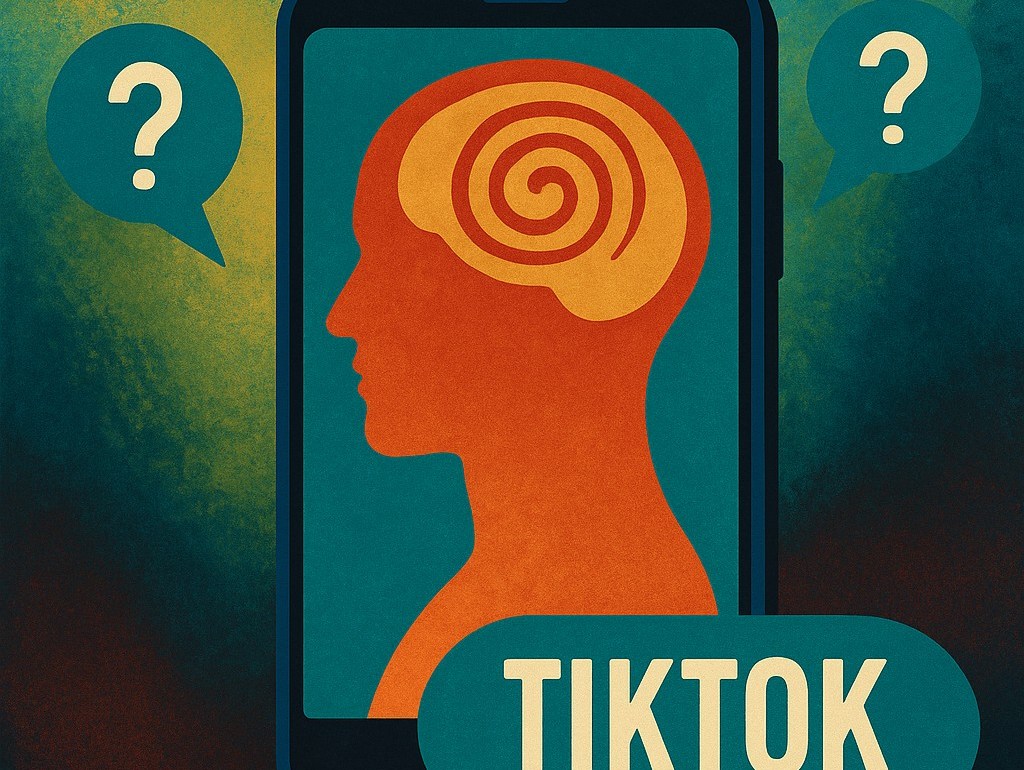
Introduction: Scroll, Swipe, Diagnose
It starts innocently enough, right?
You’re scrolling TikTok, and a video says: “If you do this, you might have ADHD.”
Or: “People with anxiety often…”
Or: “Signs you’re secretly autistic.”
You pause. You relate. Suddenly, you’re wondering: “Is that me?”
Welcome to the world of TikTok therapy, bite-sized mental health content that feels personal, validating… and dangerously close to becoming an addiction.
The Appeal of TikTok Therapy
There’s a reason this content explodes:
- Validation – Hearing your quirks described can feel like someone finally sees you without the costly embarrassment of seeing a professional therapist.
- Accessibility – Therapy is expensive and even more so nowadays with Donald Trump messing around with insurance; TikTok is free.
- Community – Millions of people commenting, “Same here, I thought I was the only one.”
For those who feel unseen or unheard by professionals, TikTok becomes a lifeline.
The Problem with Self-Diagnosis
But here’s the rub: not every relatable moment is a diagnosis.
- Oversimplification – Complex disorders get reduced to catchy lists: “5 Signs You Might Have…”
- Overlap – Symptoms like fatigue, forgetfulness, or restlessness can apply to multiple conditions—or just daily life.
- Confirmation Bias – Once you “see yourself” in a condition, you start interpreting everything as proof.
Soon, you’re not just learning, you’re labeling. And labels stick just like Dollar Store super glue on fingers.
Why We’re Addicted to It
It’s not just the information. It’s the dopamine hit.
- You watch one video, feel seen.
- You watch five more, and suddenly you’ve “diagnosed” yourself with ADHD, anxiety, and maybe even OCD.
- You keep scrolling because each new label offers a weird kind of relief, and honestly, it feels good.
It feels like control. But really, it’s uncertainty dressed up in hashtags.
The Real Danger
- Misdirection – You might ignore real issues while chasing the wrong diagnosis.
- Hopelessness – Believing you “have” a disorder can lead to self-fulfilling despair.
- Stigma & Misuse – Throwing terms like “narcissist” or “trauma response” around casually waters down real suffering.
TikTok isn’t therapy; it’s a highlight reel of human struggle, packaged to entertain.
The Middle Ground: Learning Without Labeling
That doesn’t mean TikTok therapy is all bad.
- It starts conversations.
- It makes mental health less taboo.
- It offers comfort to those who can’t yet access professional care.
The key is balance: learn, but don’t diagnose. Reflect, but don’t replace professional care.
Final Thought: Beyond the Scroll
TikTok therapy shows us one thing clearly: people are hungry for understanding. We crave language for our struggles, a way to explain the parts of ourselves that feel broken or misunderstood.
But true healing doesn’t come from scrolling. It comes from slowing down. From talking to real, actual professionals, to friends, to ourselves with honesty and patience.
So the next time a video claims to “know what’s wrong with you,” pause. Ask yourself: Do I need another label? Or do I need real help?
Because you’re more than a hashtag.



